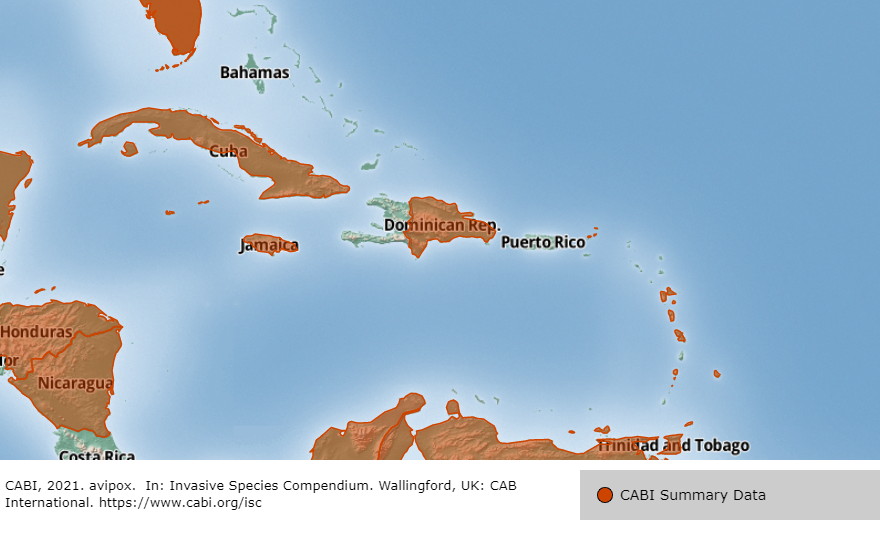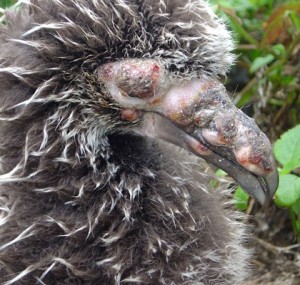The avian poxviruses (genus Avipoxvirus) constitute a group of viruses in the subfamily Chordopoxvirinae, family Poxviridae (ICTV, 2009). Depending on the authority, there are as many as 13 recognized, more or less host specific, species. The archetype, and best studied species, is fowlpox virus (Tripathy, 1993). Avian pox was one of the earliest described diseases of birds due to its distinctive gross lesions and histopathology. In 1873, Bollinger described the pathology of avian pox and the characteristic inclusion bodies that bear his name. Decades later, Woodruff and Goodpasture cultured fowlpox virus on embryonic, chorioallantoic membrane and conclusively demonstrated that it was the causative agent of fowlpox disease (van Riper and Forrester, 2007).
Avian pox presents as two common forms: 1) dry or cutaneous pox affecting the exposed skin of the head and feet and 2) wet or diphtheritic pox affecting the mucous membranes of the mouth, esophagus and upper respiratory tract. A systemic or septicemic form may also occur in canaries and some wild passerines (van Riper and Forrester, 2007).
Avian poxviruses cause economically significant disease in chickens (fowlpox), domestic turkeys (turkeypox), farmed game birds (quailpox) and caged canaries (canarypox). Fowlpox causes significant economic loss worldwide through mortality (50-60%), decreased egg production or retarded growth in broilers, layers and breeding stock. Canarypox, perhaps the most lethal form of avian pox, can result in high losses over a short period in large commercial aviaries (Cumnningham, 1978; Tripathy and Reed, 2003).
Distribution Map (CABI ISC):

